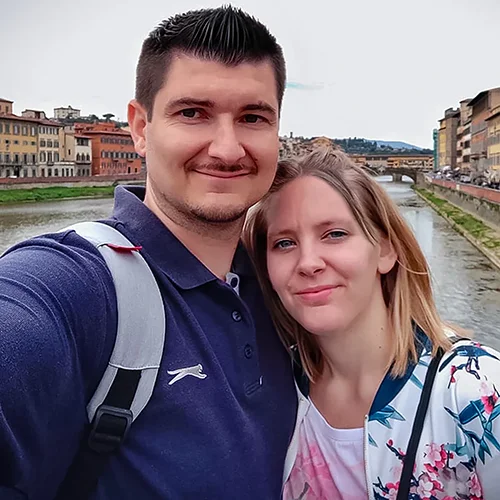Assumption Day Germany vs. Spain
Assumption Day Germany vs. Spain
Assumption Day Germany vs. Spain
Assumption Day Germany vs. Spain
15. August 2024
Feedback: 0
A Few Days Ago, Our Family Asked Us Whether the Assumption of Mary is Also a Public Holiday in Spain. We knew that this day is indeed a public holiday here, but does it apply nationwide? Or does each region have its own rules? To find out and to understand the differences between Germany and Spain in this regard, we did some research and spoke with acquaintances about this holiday, which is known in Spain as „La Asunción de la Virgen.“
Religious Significance
August 15th is an important religious holiday celebrated in both Germany and Spain. On this day, the Feast of the Assumption of Mary is observed. It is deeply rooted in the Catholic Church and honors the Virgin Mary’s ascension into heaven. While the religious significance is the same in both countries, the traditions and celebrations differ. These variations are based on each country’s unique historical and cultural backgrounds.
Germany
In Germany, the Assumption of Mary is a holiday, though it is not celebrated nationwide. It is mainly significant in Catholic regions. August 15th serves as a reminder of the Catholic Church’s belief that Mary, the mother of Jesus, was taken up into heaven after her death, not only in spirit but also bodily into heavenly glory. This belief, known as the „Assumption of Mary,“ has a long tradition in the Catholic Church and reflects the special veneration of Mary.
Where Is It a Public Holiday?
In Germany, the Assumption of Mary is not a nationwide public holiday. It is only recognized as a public holiday in certain federal states and regions, primarily in strongly Catholic areas. These include:
◉ Bavaria: Here, the Assumption of Mary is a holiday in most communities, especially in rural and Catholic regions.
◉ Saarland: Saarland is the only federal state where the Assumption of Mary is observed as a public holiday statewide.
In other parts of Germany, particularly in predominantly Protestant regions, August 15th is just a regular workday.
Traditions and Celebrations
In the regions where the Assumption of Mary is a holiday, traditions run deep. The day is often marked with religious processions, solemn church services, and special blessings. One of the most well-known traditions in Bavaria and Saarland is the blessing of herbs. Bundles of herbs, consisting of various medicinal plants and flowers, are gathered and blessed in church. According to ancient beliefs, these herb bundles are thought to protect homes and fields from harm and bring good health.
Spain
In Spain, August 15th is known as „La Asunción de la Virgen“ and is celebrated as a nationwide public holiday. This day holds similar religious significance to that in Germany, but the celebrations are often larger and accompanied by festive activities. „La Asunción de la Virgen“ in Spain is not only a day of religious devotion to Mary but is also deeply embedded in Spanish culture.
Celebrations and Traditions
In Spain, August 15th is often celebrated with great pomp and festivity. In many towns and villages, processions take place where statues of the Virgin Mary are carried through the streets, accompanied by traditional music, singing, and prayers. These processions are the heart of the celebrations and regularly draw large crowds.
In addition to the processions, many Spanish cities feature fireworks, fairs, and markets, making this day one of the highlights of the summer. Particularly in major cities and well-known religious centers such as Seville, Madrid, or Barcelona, elaborate masses and ceremonies are held, often attended by thousands of faithful.
Since August 15th falls during the summer holidays in Spain, many families also take advantage of this public holiday to go on trips or relax at coastal resorts. It’s a day where religious life and the joy of summer come together in a special way.
In Summary
The Assumption of Mary is a feast deeply rooted in Christian tradition and has inspired a variety of customs and traditions across many cultures. It commemorates the Virgin Mary’s ascension into heaven and holds special significance in the Catholic Church. In Spain, this day is not only an expression of religious devotion but also a vibrant part of Spanish culture. Entire regions of the country celebrate with grand festivities, including large processions in which statues of the Virgin Mary are carried through the streets, accompanied by music, singing, and prayers. These processions are a central part of the celebrations and often attract large crowds. Fireworks and markets bring people together and enhance the communal experience of this important day.

Wir sind zwei deutsche Auswanderer und auf emigres-life nehmen wir Dich mit auf unsere Reise in ein neues Leben.
In unserem Projekt schwingt das Pendel meist in Richtung stressig oder chaotisch und weniger in Richtung tiefenentspannt.
Wenn du also wissen willst, in welches Fettnäpfchen wir als nächstes treten oder welche Hürden vor uns liegen und wie wir sie überwinden, dann bleib dran.


 Pin it!
Pin it!

